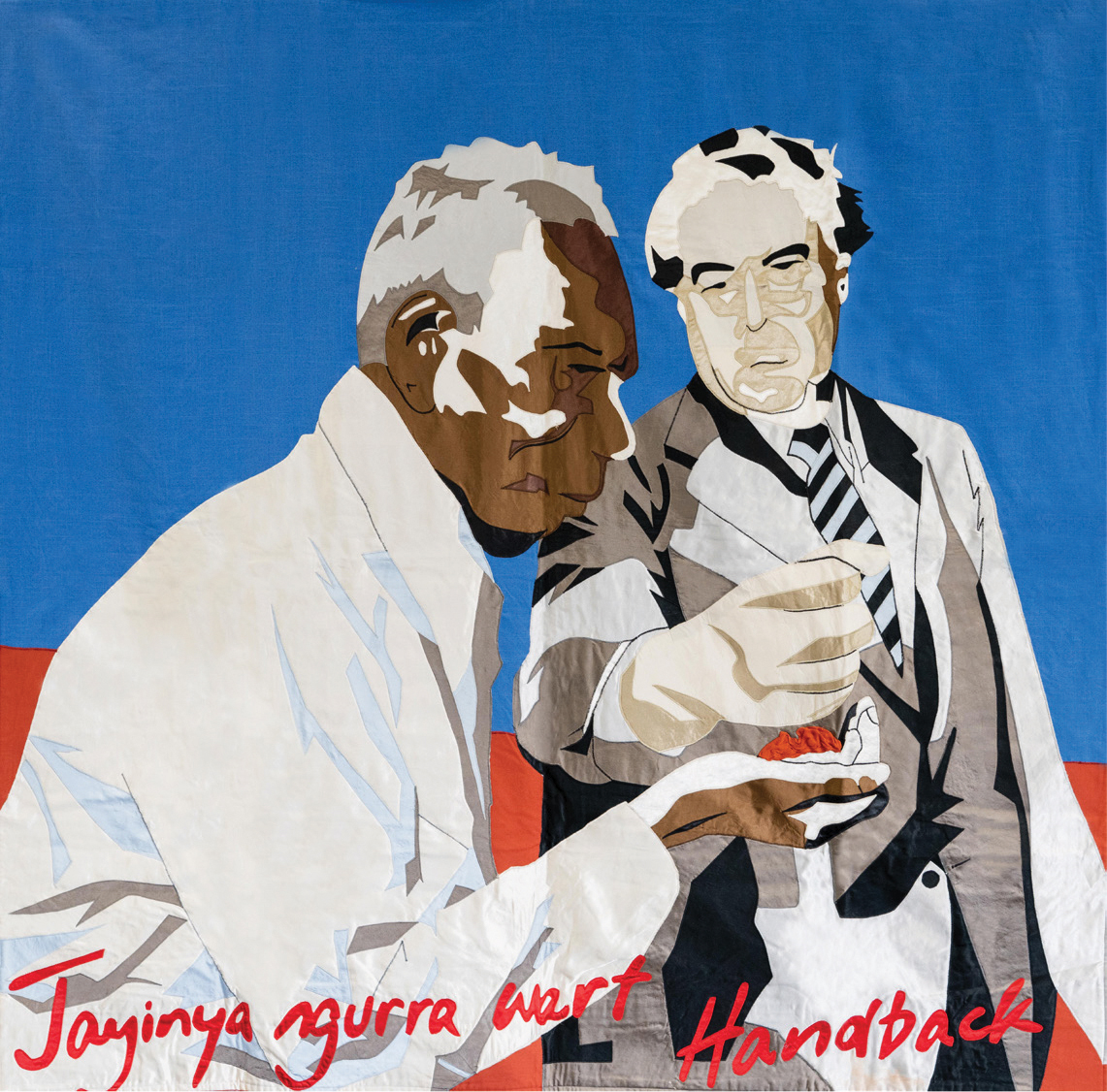From the Darkness into the Light
In 1966, Vincent Lingiari led Gurindji, Mudbura, Bilnarra, Ngariyman and Warlpiri peoples on a strike from Wave Hill Station. The industrial dispute over appalling work conditions became a demand by the Gurindji for the return of their traditional lands, and resulted in the first historic hand back of lands to First Nations Australians and important land rights legislations.
By Kate Conway
CDU Art Gallery in partnership with Karungkarni Arts and Culture presents Gurindji freedom banners. Subtitled Mumkurla-nginyi-ma parrngalinyparla, From the Darkness into the Light, the exhibition showcases banners created by the Gurindji people depicting the historic Wave Hill Walk Off.
 Originally created in 1999, CDU Art Gallery Curator Dr Joanna Barrkman worked on the Gurindji freedom banners project as artistic director and principal banner maker. Over three months, through a process of consultation with Gurindji Elders – some of whom participants in the historic walk off – photographed re-enactments and archival research brought the banners to life.
Originally created in 1999, CDU Art Gallery Curator Dr Joanna Barrkman worked on the Gurindji freedom banners project as artistic director and principal banner maker. Over three months, through a process of consultation with Gurindji Elders – some of whom participants in the historic walk off – photographed re-enactments and archival research brought the banners to life.
The collection of 10 banners depicts all stages of the historic event. From the difficult conditions at Wave Hill Station and the walk off and negotiations that ensued, to the celebratory ceremonies that took place at the ceremonial hand back of land by Prime Minister Gough Whitlam, nine years later in 1975.
Created using layers of appliquéd fabric in various textures, the banners are large and visually striking representations of the important story woven with thoughtfully chosen elements.
“There’s a palette of colours that we used in the making to create a relationship between the different images,” says Barrkman.
“The decision was made to have the consistent rust coloured earth fabric and the blue for the sky, because it’s such a beautiful colour and it’s very much the beautiful vastness on Country when you’re on Gurindji lands.”
The borders of the banners feature traditionally painted panels with two panels depicting the massacre site Tartarr, also known as Black Fellows Knob, with dotted lines of white paint to signify light emerging from the dark.
“The darkness is coming out of a period of colonisation and a sense of being enslaved,” says Barrkman.
“They saw that their agency to claiming land back is moving from darkness into the light into a better future for themselves and their future generations.”
Originally launched at Gurindji Freedom Day in 2000 and unveiled at the Fifth Annual Vincent Lingiari Memorial Lecture at CDU that year, this is the first time the banners have been exhibited formally. 23 years later, the exhibition is a timely reminder of the history of struggle by First Nations Australians for recognition in this country.
Head down to CDU Art Gallery and take the opportunity to learn about this cultural and significant piece of national history.
Gurindji freedom banners - Mumkurla-nginyi-ma parrngalinyparla, From the darkness into the light
UNTIL SAT 15 JUL
AT CDU ART GALLERY
INFO cdu.edu.au/gallery
Thumbnail & Header: Gurindji community members, Joanna Barrkman and Chips Mackinolty, 'Walk-off banner; the Gurindji freedom banner series' (detail), 2000, applique and hand-painted textile, 163x316cm. Reproduced courtesy of Karungkarni Arts and Culture
Inset: Gurindji community members, Joanna Barrkman and Chips Mackinolty, 'Mumkurla-nginyi-ma parrngalinyparla (The handback: from the darkness into the light)', 2000, applique and hand-painted textile, based on a photograph by Mervyn Bishop, 1975. Reproduced courtesy of Karungkarni Arts and Culture
